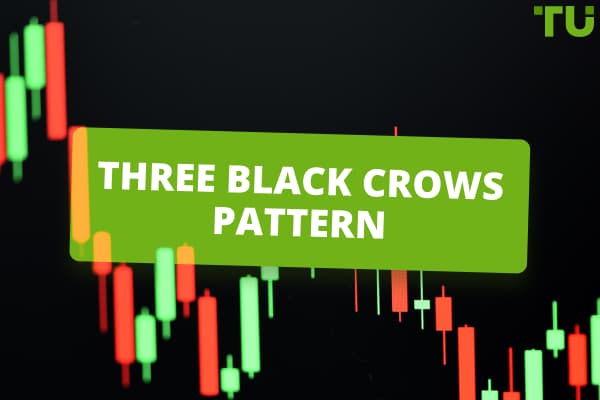Supply and demand zones trading rules
The Forex market is a global market where currencies are traded. It is the world's largest and most liquid financial market, with a daily trading volume of over $6 trillion. As a result, trading in the Forex market can be a lucrative opportunity for individuals and institutions to make profits by buying and selling different currencies. In this article we will discuss how to trade supply and demand zones to improve your Forex trading performance.
How do you trade supply and demand zones?
One popular strategy that many traders use in the Forex market is trading based on the principles of supply and demand. This involves analyzing the forces that drive the demand for and supply of a particular currency and using that information to make informed trading decisions. In this review, the experts at TU will explore how traders can use the principles of supply and demand to trade in the Forex market. We will also discuss some common technical strategies that traders use to identify shifts in supply and demand in the market. Understanding and incorporating the principles of supply and demand into your trading strategy can be a powerful tool to help you make more informed and successful trades in the Forex market.
Top-5 Supply and demand trading strategies
1. Trend-following strategy
This strategy involves identifying trends in the market and buying or selling assets based on the direction of the trend. For example, if the price of a particular asset is trending upward, it means that the market is demand-powered, and a trader using this strategy might buy the asset in the hope that the price will continue to rise.
2. Contrarian strategy
This strategy involves taking a position opposite the prevailing market trend. For example, if the market is trending upwards, demand might slow down moving forward, and a trader using this strategy might sell the asset, hoping that the price will eventually fall.
3. Range trading strategy
This strategy involves buying an asset when the price is low and selling it when it is high within a certain price range. The goal of this strategy is to take advantage of price fluctuations within a given range rather than trying to predict the direction of the trend.
4. Momentum trading strategy
Momentum trading strategy involves buying assets showing strong momentum or price movement in a particular direction. The goal is to ride the momentum as long as possible and sell the asset before it begins to lose steam.
5. Fundamental analysis strategy
This strategy involves analyzing the underlying fundamental factors that can impact the supply and demand for an asset, such as economic and industry-specific news and data. Traders using this strategy will often base their trades on their analysis of these fundamental factors rather than technical analysis or market trends.
Supply and demand trading strategy: main rules for beginners
The experts at TU have outlined the main rules that beginners can follow as guidelines when using any supply and demand trading strategy.
1. Identify the underlying forces driving supply and demand
To trade based on the principles of supply and demand, it is vital to understand the factors that drive the demand for and supply of a particular currency. This may include economic indicators such as gross domestic product (GDP), employment rates, and inflation, as well as political and geopolitical events that can affect the perceived risk of a particular currency.
2. Look for imbalances in supply and demand
As prices change, the balance between supply and demand in the market can shift. For example, when demand for a currency is greater than its supply, the price will tend to rise. Conversely, when the supply of a currency is greater than its demand, the price will tend to fall. Identifying imbalances in supply and demand can help traders anticipate price movements and make informed trades.
3. Use technical analysis to identify trends
Many traders use technical analysis tools such as charts and indicators to identify trends in the market and help predict future price movements.
4. Use fundamental analysis to understand the underlying drivers of supply and demand
In addition to technical analysis, traders may also use fundamental analysis to understand the underlying drivers of supply and demand for a particular currency. This may involve analyzing economic data and other indicators such as interest rates, political events, and trade balances.
5. Use risk management techniques to protect your trades
As with any trading strategy, it is essential to use risk management techniques to protect your trades and limit potential losses. This may include setting stop-loss orders, using leverage wisely, and diversifying your portfolio.
These are some basic rules to consider when using a supply and demand trading strategy in the Forex market. It is important to note that trading based on the principles of supply and demand is just one of many strategies that traders may use, and it may not be suitable for all traders or all market conditions. As always, it is important to carefully research and understand the risks and rewards of any trading strategy before implementing it in your trading activities.
Let's do an example
Trading in the Forex market using supply and demand zones involves identifying areas on a price chart where the supply of a currency is likely to be greater than its demand (supply zones) or where the demand for a currency is expected to be greater than its supply (demand zones). Here is a step-by-step algorithm for how you can trade in the Forex market using supply and demand zones:
1. Identify potential supply and demand zones: To identify potential supply and demand zones, look for areas on a price chart where the price has previously reversed after reaching a certain level. These areas may indicate a significant imbalance between supply and demand at that price level.
2. Confirm the validity of the supply and demand zones: To confirm the validity of the supply and demand zones, look for other technical indicators that support the existence of a supply or demand imbalance. This may include chart patterns, trend lines, and other technical indicators such as the relative strength index (RSI) or moving average convergence divergence (MACD).
3. Wait for a breakout or reversal at the supply or demand zone: Once you have identified and confirmed a potential supply or demand zone, wait for a breakout or reversal at that level. A breakout occurs when the price moves outside the zone, indicating that the supply or demand imbalance has been resolved. A reversal occurs when the price moves back into the zone after breaking out, indicating a potential change in the balance between supply and demand.
4. Enter a trade in the direction of the breakout or reversal: Once a breakout or reversal has occurred at a supply or demand zone, you can enter a trade in the direction of the move. For example, if the price breaks out of a demand zone to the upside, you can enter a long (buy) trade. Conversely, if the price breaks out of a supply zone to the downside, you can enter a short (sell) trade.
5. Use risk management techniques to protect your trade: As with any trade, it is important to use risk management techniques to protect your position and limit potential losses. This may include setting stop-loss orders at a certain level, using leverage wisely, and diversifying your portfolio.
3 tips for using supply and demand zones
Use supply and demand zones in conjunction with other technical indicators: When using supply and demand zones in your trading, it can be helpful to use them in combination with other technical indicators, such as moving averages or trend lines, to validate your trade setups and increase your chances of success.
Consider the overall trend: It is crucial to consider the general trend of the market when identifying and trading with supply and demand zones. For example, if the market is in an uptrend, look for buying opportunities near demand zones, and if the market is in a downtrend, look for selling opportunities near supply zones.
Pay attention to the strength of the zone: A supply or demand zone that has been tested multiple times and has held a strong level of support or resistance is likely to be a more reliable trade opportunity compared to a zone that has only been tested once or twice.
Keep in mind that supply and demand zones are just one tool that can be used in Forex trading, and it is important to use a combination of technical and fundamental analysis to make informed trade decisions. In addition, to minimize potential losses, it is vital to practice risk management, such as setting stop-loss orders.
Best brokers 2024


FAQs
1. How do you identify a supply and demand zone in forex?
First, you need to spot the current price on the chart. Then, look at the left side of the chart and find a big strong lineup of candles either moving up or down. Typically, supply zones show upward movements, and demand zones show downward movements.
2. What are demand and supply in Forex trading?
Demand and supply in Forex trading refer to the movement of currency prices based on the balance between the desire to buy and sell a particular currency.
3. How do traders analyze demand and supply in Forex?
Traders analyze demand and supply in Forex by looking at factors affecting the balance between buying and selling pressure for a particular currency. These factors can include economic indicators, political events, and market sentiment. By carefully analyzing these factors, traders can make informed decisions about when to buy or sell a particular currency.
4. How do traders use demand and supply to make trading decisions?
Traders use the principle of demand and supply to make trading decisions by identifying opportunities where the supply and demand for a particular currency are out of balance. For example, suppose a trader believes that the demand for a specific currency will increase due to favorable economic conditions. In that case, they may buy that currency in anticipation of a price increase.
5. What risks are involved in trading based on demand and supply in Forex?
Trading based on demand and supply in Forex carries a number of risks, as the Forex market is highly volatile and subject to sudden changes in market conditions. One of the main risks is the risk of loss, as traders can lose money if they make incorrect predictions about the direction of currency prices. Additionally, traders must also consider the risk of market manipulation, as unscrupulous traders may try to manipulate the market to their advantage. To minimize these risks, traders should carefully research and analyze market conditions before making trading decisions.
Glossary for novice traders
-
1
CFD
CFD is a contract between an investor/trader and seller that demonstrates that the trader will need to pay the price difference between the current value of the asset and its value at the time of contract to the seller.
-
2
Forex Trading
Forex trading, short for foreign exchange trading, is the practice of buying and selling currencies in the global foreign exchange market with the aim of profiting from fluctuations in exchange rates. Traders speculate on whether one currency will rise or fall in value relative to another currency and make trading decisions accordingly. However, beware that trading carries risks, and you can lose your whole capital.
-
3
Economic indicators
Economic indicators — a tool of fundamental analysis that allows to assess the state of an economic entity or the economy as a whole, as well as to make a forecast. These include: GDP, discount rates, inflation data, unemployment statistics, industrial production data, consumer price indices, etc.
-
4
Risk Management
Risk management is a risk management model that involves controlling potential losses while maximizing profits. The main risk management tools are stop loss, take profit, calculation of position volume taking into account leverage and pip value.
-
5
Options trading
Options trading is a financial derivative strategy that involves the buying and selling of options contracts, which give traders the right (but not the obligation) to buy or sell an underlying asset at a specified price, known as the strike price, before or on a predetermined expiration date. There are two main types of options: call options, which allow the holder to buy the underlying asset, and put options, which allow the holder to sell the underlying asset.
Team that worked on the article
Chinmay Soni is a financial analyst with more than 5 years of experience in working with stocks, Forex, derivatives, and other assets. As a founder of a boutique research firm and an active researcher, he covers various industries and fields, providing insights backed by statistical data. He is also an educator in the field of finance and technology.
As an author for Traders Union, he contributes his deep analytical insights on various topics, taking into account various aspects.
Dr. BJ Johnson is a PhD in English Language and an editor with over 15 years of experience. He earned his degree in English Language in the U.S and the UK. In 2020, Dr. Johnson joined the Traders Union team. Since then, he has created over 100 exclusive articles and edited over 300 articles of other authors.
Mirjan Hipolito is a journalist and news editor at Traders Union. She is an expert crypto writer with five years of experience in the financial markets. Her specialties are daily market news, price predictions, and Initial Coin Offerings (ICO).











